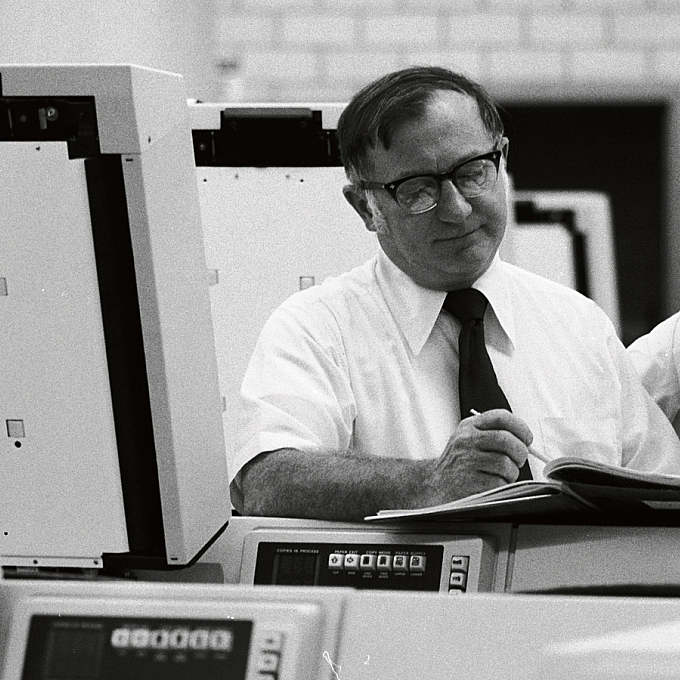
Document Imaging
Preserving Information through Document Imaging
Given young George Eastman's experience as a bank clerk, it's not surprising that, in 1928, his company's new Recordak subsidiary introduced the first microfilm system – designed to simplify the handling of bank records.
Microfilming involved photographing documents at a greatly reduced size for archiving purposes. By 1931, Recordak had automated the process, moving film in synchronization with documents fed over a revolving drum. This allowed documents of any length to be filmed.
In the decades that followed, technology continued to advance and microfilm became commonplace in many document intensive areas like insurance firms, libraries, government agencies and the transportation industry.
During World War II, Kodak and its U.K. operation, Kodak Limited, even adapted microfilm technology to create a system for filming letters sent to soldiers. "Victory mail" -- or "V-mail" as it was called -- was designed to conserve shipping space needed for war materials. It enabled a single mailbag to carry the equivalent of 37 bags of letters. During the three years it was used, more than 1/2 billion pieces of v-mail were received by troops abroad.
Building on its success in micrographics and advances in electrophotography, Kodak expanded its business imaging presence in 1975 by entering the copier market. Its first product, the KODAK EKTAPRINT 100 Copier-Duplicator, offered high-speed, high-quality plain-paper copies. The company remained in the copier business for more than 20 years, and continues its involvement with electrophotography through the family of KODAK NEXPRESS Digital Production Color Presses.
Kodak continued to participate in document management with a successful range of document scanners, software and other solutions into 2013. In September 2013, the company spun-off the Document Imaging business, which now operates independently as part of Kodak Alaris.